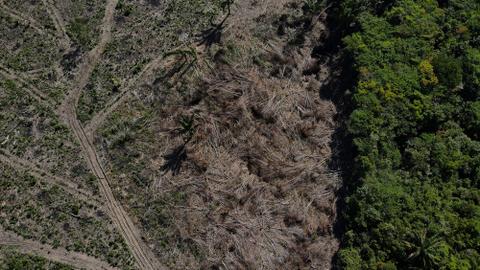New data has shown deforestation in Brazil’s portion of the Amazon rainforest hit a new record high in February, as President Luiz Inacio Lula da Silva’s administration works to end years of widespread devastation.
When President Luiz Inacio Lula da Silva took office on Jan. 1, he pledged to end illegal logging after years of surging deforestation under his predecessor Jair Bolsonaro. However, according to data from the national space agency released on Friday, satellite monitoring detected 322sq km (124sq miles) of forest cover destroyed in the Brazilian Amazon last month, an increase of 62 percent from the previous record in February 2022 and the highest since Inpe’s data series began in 2015.
Bolsonaro cut environmental enforcement in the Amazon, and environmental and Indigenous groups have blamed that for the increase in illegal mining and violence recorded under his administration when average annual deforestation in the Brazilian Amazon surge by 75 percent compared with the previous decade.
The issue has been of international concern, as the hundreds of billions of carbon-absorbing trees in the Amazon offer a critical buffer in the global fight against climate change and experts and environmental officials have warned it could take years to significantly lower deforestation after Bolsonaro cut funding and staff at key agencies.
Read also: NCC launches clean energy campaign for telecoms sector
“We just left behind a government that supported deforestation. As long as enforcement and control do not reach the entire region, illegal deforesters may exploit that to ramp up this deforestation,” Greenpeace Brasil spokesperson Romulo Batista said on Friday.
So far, there is limited data to indicate whether Lula’s more aggressive conservation policies are working in the direction he wanted them to. But according to Inpe, lower than average deforestation figures in January, deforestation fell 22% in the first two months of 2023 compared to the same period a year earlier.
In a presentation last week, a scientist with the space research agency, Inpe, blamed the large month-to-month fluctuations on cloud cover that hid deforestation on satellite images in January, only for it to be revealed in February.
Meanwhile, environment minister Silva last month called the high rate of deforestation shown in early data from February “a kind of revenge against the actions already being taken” as the level of deforestation was unusual in that time of the year, when heavy rains make it difficult for loggers to work in the forest.
“We will keep working towards our goal,” she told reporters.
Story was adapted from Reuters.
